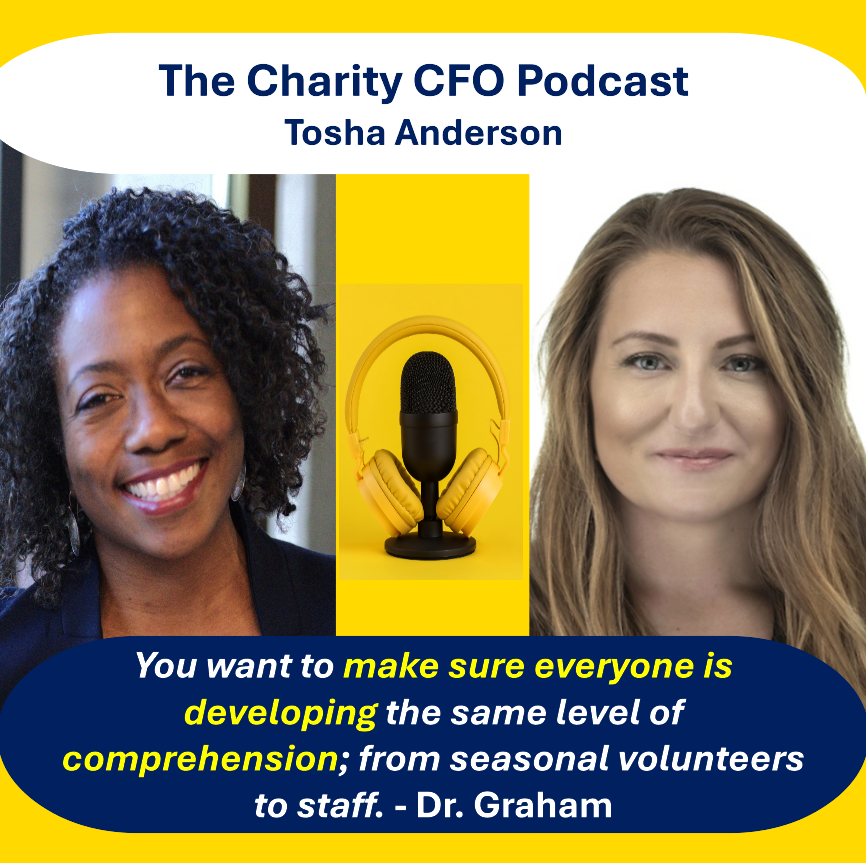Executive Summary
In this powerful conversation, Dr. Carrie Graham, President and Founder of COG Learning and Solutions, shares her revolutionary ERA training method and practical strategies for nonprofit leaders struggling to create meaningful professional development programs. With nonprofits facing the highest turnover rates across all sectors, effective training and development becomes critical for retaining top talent and building organizational capacity.
Listen Here > https://www.youtube.com/watch?v=QlpKSa_5qG0
10 Key Insights Every Nonprofit CEO Should Know
1. The Nonprofit Training Crisis is Real
Nonprofits face unique training challenges due to limited resources, but the need is amplified by industry-high turnover rates. Organizations that invest strategically in development training see dramatically improved retention and performance.
2. The ERA Method Transforms Training Effectiveness
- Engagement: Make training about the learners, not the instructor
- Retention: Focus on comprehension and memory techniques
- Application: Ensure skills transfer to real-world situations
3. Three Critical Training Areas for Nonprofits
- Program mergers: Aligning different organizational cultures and practices
- Board development: Onboarding and empowering board members for effective governance
- Staff and volunteers: Creating consistent, standardized training experiences
4. Intentionality Separates Success from Failure
Organizations that thrive have clear strategies for their professional development plan rather than throwing together last-minute sessions or sending random people to conferences.
5. Training Delivery Matters More Than Content
The way you facilitate training dramatically impacts retention and application. Leadership qualities include recognizing that effective training is about the audience, not the presenter.
6. Small Organizations Can Compete Through Strategic Leverage
When budget allows only one person to attend a conference, require them to train the entire team upon return—multiplying your training investment.
7. Eliminate Jargon and Define Operational Terms
Many training failures stem from assumptions about shared understanding. Clear definitions and operational language are essential for comprehension.
8. Engagement Starts Before Content Delivery
Check in with your team's current state and invite them to share their experiences with the topic before presenting new information.
9. Evaluation Must Go Beyond "Did You Like It?"
Use best practices in data collection and analysis to make informed decisions about future training and development initiatives.
10. Resource Constraints Demand Creative Solutions
Limited budgets require strategic thinking about training delivery, leveraging internal expertise, and focusing on high-impact development opportunities.
10 Action Items for Executive Directors and CEOs
Immediate Actions (This Week)
- Conduct Individual Needs AssessmentsAsk each team member individually: "What skills do you need to perform your job with excellence?" and "What are your career aspirations within our organization?"
- Audit Your Current Training ApproachDownload Dr. Graham's free training assessment at DrCarrieGraham.com to identify gaps between reactive and proactive professional development.
- Eliminate Training JargonReview your onboarding materials and training content to define all acronyms and operational terms clearly.
Strategic Development (This Month)
- Implement the Conference Leverage StrategyRequire anyone attending external training to present key learnings to the full team, multiplying your professional development investment.
- Redesign Your Training Facilitation ApproachStart every training session by checking in with participants and asking what they think about the topic before presenting content.
- Create Intentional Board DevelopmentDevelop a standardized board onboarding process that empowers members to confidently make asks and contribute meaningfully to organizational work.
Long-term Leadership Development (This Quarter)
- Develop a Strategic Professional Development PlanMove beyond random conference attendance to align training opportunities with organizational goals and individual career paths.
- Build Internal Training CapacityIdentify team members with strong leadership skills who can facilitate internal training sessions, reducing reliance on external providers.
- Implement Robust Training EvaluationReplace satisfaction surveys with meaningful assessment tools that measure skill application and long-term behavioral change.
- Integrate Training into Strategic PlanningInclude professional development as a core component of your next strategic planning process, ensuring training and development receives the same attention as volunteer management and financial strategy.
The Bottom Line for Nonprofit Leaders
Effective training isn't about having unlimited resources—it's about strategic intentionality. Organizations that empower employees through thoughtful development training see improved retention, enhanced leadership qualities, and stronger organizational capacity. The key is making training about your people's needs and growth, not checking boxes or filling time.
Start small, think strategically, and remember: your team's development is an investment in your mission's success.
Resources
Listen Here > https://www.youtube.com/watch?v=QlpKSa_5qG0
Additional CFO Link > https://thecharitycfo.com/your-nonprofit-training-isnt-working-heres-how-to-fix-it/
Read > Your Training is Missing the Mark
Subscribe > C.A.L.M. Email for weekly industry insights
